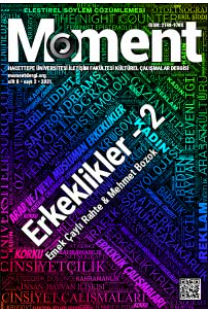RISE OF MODI’S TECH-POPULISM IN INDIA
___
Di Tella, T. (1965). Populism and reform in Latin America. In C. Veliz, Obstacles to change in Latin AMerica. Oxford: Oxford University Press.Di Tella, T. (1997). Populism in the twenty-first century. Government and Opposition, 32, 187-200.
From tea boy to prime minister: India Modi-fied. (2014, May 17). Khaleej Times. Retrieved from https://www.khaleejtimes.com/international/india/from-tea-boyto- prime-minister-india-modi-fied
Jaffrelot, C. (2015). Contemporary South Asia The Modi-centric BJP 2014 election campaign: new techniques and old tactics. Contemporary South Asia, 23(2), 151– 166. https://doi.org/10.1080/09584935.2015.1027662
Jaffrelot, C., & Martelli, J. T. (2017, August 15). Reading PM Modi, through his speeches. The Indian Express. Retrieved from https://indianexpress.com/article/explained/reading-pm-modithrough- his-speeches-independence-day-4796963/
Joshi, P. (2014, April). Amit Shah takes charge. The Caravan, 76–87. Retrieved from https://caravanmagazine.in/reportage/organiser
Mahurkar, U., & Pradhan, K. (2014, May 16). Meet the men behind Modi’s audacious election campaign. India Today. Retrieved from https://www.indiatoday.in/magazine/cover-story/story/20140224-narendramodi- bjp-prime-ministerial-candidate-campaign-social-media-800175-1999-11-30
Mazzoleni, G., & Bracciale, R. (2018). Socially mediated populism: the communicative strategies of political leaders on Facebook. Palgrave Communications, 4(1), 50.
Medha. (2016). India a Home Only to Hindus? New Refugee Policy Exacerbates Tensions. Retrieved December 16, 2018, from https://www.gigahamburg. de/en/publication/india-a-home-only-to-hindus
Mishra, A. (2018, November 16). On Nehru row, PM Modi dares Congress to make ‘outsider’ party’s chief. Hindustan Times. Retrieved from https://www.hindustantimes.com/india-news/on-nehru-row-pm-modi-darescongress- to-make-outsider-party-s-chief/story-alT9qI2pejyrhhkJS5K9VI.html
Mouzelis, N. (1985). On the concept of populism: populist and clientelist modes of incorporation in semi-peripheral politics. Politics & Society, 329-348.
Mudde, C. (2004). The Populist Zeitgeist. Government and Opposition, 541-563.
Mudde, C. (2016). Europe's Populist Surge: A Long Time in the Making. Foreign Affairs, 95(6), 25–30.
Naim, M. (2017, April 21). How to be a populist. The Atlantic.
Narendra Modi calls PM “maun” Mohan Singh. (2012, October 29). The Indian Express. Retrieved from http://archive.indianexpress.com/news/narendra-modi-calls-pmmaun- mohan-singh/1023532/
Nelson, D. (2014, May 2). “Magic” Modi uses hologram to address dozens of rallies at once. The Telegraph. Retrieved from https://www.telegraph.co.uk/news/worldnews/asia/india/10803961/Magic-Modiuses- hologram-to-address-dozens-of-rallies-at-once.html
Pal, J. (2015). Banalities Turned Viral: Narendra Modi and the Political Tweet. Television & New Media, 16(4), 378–387. https://doi.org/10.1177/1527476415573956
Pande, S. (2014, June 8). Just the Right Image. Business Today. Retrieved from https://www.businesstoday.in/magazine/case-study/case-study-strategy-tacticsbehind- creation-of-brand-narendra-modi/story/206321.html
Pasricha, A. (2015, January 22). India Launches Campaign to Save, Educate Girls. Voice of America. Retrieved from https://www.voanews.com/a/india-launchescampaign- to-save-educate-girls/2608963.html
PM Modi most followed world leader on Instagram. (2018). Retrieved from http://www.newsonair.com/Main-News-Details.aspx?id=356341
Press Trust of India. (2012, February 12). Modi connects with the people through his “chai pe charcha” campaign. The Times of India. Retrieved from https://timesofindia.indiatimes.com/india/Modi-connects-with-the-peoplethrough- his-chai-pe-charcha-campaign/articleshow/30292508.cms
Press Trust of India. (2016, January 26). PM Modi sends personalized SMS greetings to 18 lakh police personnel on R-day. The Times of India. Retrieved from https://timesofindia.indiatimes.com/india/PM-Modi-sends-personalized-SMSgreetings- to-18-lakh-police-personnel-on-R-day/articleshow/50733948.cms
Purkayastha, P. (2018, August 4). NaMo App a tool in disguise for 2019 General Election? India Today. Retrieved from https://www.indiatoday.in/elections/loksabha- 2019/story/namo-app-a-tool-in-disguise-for-2019-general-election-1305004- 2018-08-04
Rukmini, S. (2016, October 18). Modi got most prime-time coverage: study. The Hindu. Retrieved from https://www.thehindu.com/elections/loksabha2014/Modi-got-mostprime- time-coverage-study/article11639092.ece
Schroeder, R. (2018). Social Theory after the Internet: Media, Technology, and Globalization. UCL Press. Retrieved from https://www.jstor.org/stable/pdf/j.ctt20krxdr.6.pdf?refreqid=excelsior%3A51995435 5e05a6f71b6dbb41070fd53e
Shetty, A. (2012, August 9). Narendra Modi to interact live on Google+ Hangouts. First Post. Retrieved from https://www.firstpost.com/tech/news-analysis/narendra-modito- interact-live-on-google-hangouts-3605497.html
Shills, E. (1956). The Torment of Secracy: The Background and Consequences of American Security Policies. Glencoe: Free Press.
Shills, E. (1962). The intellectuals in the political development of the new states. In J. Kautsky, Political Change in Underdeveloped Countries: Nationalism and Communism. New York: Wiley.
Shukla, A. (2014, May 1). The Splash: What keeps the Narendra Modi marketing machine ticking? The Indian Express. Retrieved from https://indianexpress.com/article/india/politics/the-splash-what-keeps-the-modimarketing- machine-ticking/
Singh, N. (2018, May 3). Modi Beats Trump to Become the Most Followed Leader on Facebook. Entrepreneur India. Retrieved from https://www.entrepreneur.com/article/312892
Sinha, S. (2017). Fragile Hegemony: Modi, Social Media, and Competitive Electoral Populism in India. International Journal of Communication, 11, 4158–4180. Retrieved from http://ijoc.org.
Taggart, P. (2000). Concepts in Social Sciences: Populism. Buckingham: Open University Press.
Taguieff, P. (1995). New populist parties in Western Europe. Western European Politics, 34-51.
- ISSN: 2148-970X
- Yayın Aralığı: 2
- Başlangıç: 2014
- Yayıncı: Hacettepe Üniversitesi İletişim Fakültesi
Türkiye’de Lisans Düzeyindeki Yeni Medya Eğitimi ve Sektör Beklentileri Üzerine Bir Değerlendirme
BİR KAVRAMIN İZİNİ SÜRME ÇABASI: “POPÜLİZM NEDİR?”
FLANÖZ: ŞEHRİ ADIMLAYAN KADINLAR VE YÜRÜMENİN DÖNÜŞTÜRÜCÜLÜĞÜ ÜZERİNE
DIGITAL GAMES BETWEEN THE TENSIONS OF CULTURE, CREATIVITY AND INDUSTRY
KONUM TABANLI MOBİL OYUNLARDA OYUN EMEĞİNİN METALAŞMASI VE HİBRİT MEKÂNIN TOPLUMSAL ÜRETİMİ
RISE OF MODI’S TECH-POPULISM IN INDIA
Demokrasi, Popülizm ve Yok Olan Doğa
RETHINKING SURVEILLANCE IN THE AGE OF HIGH TECHNOLOGY
BİLİMSEL İLETİŞİM VE LİTERATÜR KULLANIM KÜLTÜRÜ: LİTERATÜR ESKİMESİ ÜZERİNDEN BİR DEĞERLENDİRME
